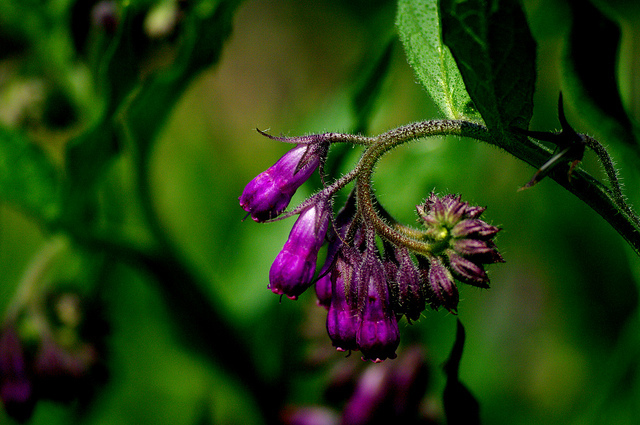
Categorías de la tienda Spices, Herbs and Medicinal Plant Seeds Lufa (loofah), Vegetable-sponge seeds (Luffa aegyptiaca)
Categorías de la tienda Spices, Herbs and Medicinal Plant Seeds St. John's wort, Artemis, St. John's Wort seeds (Hypericum perforatum)
Categorías de la tienda Spices, Herbs and Medicinal Plant Seeds Common Sage Seed (Salvia Officinalis)
Categorías de la tienda Spices, Herbs and Medicinal Plant Seeds Wild mountain basil, calaminta basil seeds (Calamintha Nepeta)
Categorías de la tienda Spices, Herbs and Medicinal Plant Seeds Common Thyme seeds (Thymus vulgaris)
Categorías de la tienda Spices, Herbs and Medicinal Plant Seeds Common Comfrey, true comfrey Seed (Symphytum Officinale)
Categorías de la tienda Spices, Herbs and Medicinal Plant Seeds Saponaria, common soapwort, soapweed seeds (Saponaria officinalis)
Categorías de la tienda Spices, Herbs and Medicinal Plant Seeds Oregano, wild marjoram (Origanum vulgare)
Categorías de la tienda Spices, Herbs and Medicinal Plant Seeds Rue, Herb-of-grace Seeds (Ruta Graveolens)
Categorías de la tienda Spices, Herbs and Medicinal Plant Seeds Rosemary Seeds (Rosmarinus Officinalis)
Lufa (loofah), Vegetable-sponge seeds (Luffa aegyptiaca)
Product no.: S-0025
In stock
can be shipped within 7 days
Customers who bought this product also bought
|
|
|
|
|
|
|
* Prices include VAT, plus delivery
Browse these categories as well: Spices, Herbs and Medicinal Plant Seeds, Promotional products
St. John's wort, Artemis, St. John's Wort seeds (Hypericum perforatum)
Product no.: S-0030
In stock
can be shipped within 7 days
Customers who bought this product also bought
|
|
|
|
|
|
|
* Prices include VAT, plus delivery
Browse these categories as well: Spices, Herbs and Medicinal Plant Seeds, Promotional products
Common Sage Seed (Salvia Officinalis)
Product no.: S-0045
In stock
can be shipped within 7 days
We also recommend
* Prices include VAT, plus delivery
Customers who bought this product also bought
|
|
|
|
|
|
|
* Prices include VAT, plus delivery
Browse these categories as well: Spices, Herbs and Medicinal Plant Seeds, Promotional products
Wild mountain basil, calaminta basil seeds (Calamintha Nepeta)
Product no.: S-0060
In stock
can be shipped within 7 days
Customers who bought this product also bought
|
|
|
|
|
|
|
* Prices include VAT, plus delivery
Browse these categories as well: Spices, Herbs and Medicinal Plant Seeds, Promotional products
Common Thyme seeds (Thymus vulgaris)
Product no.: S-0500
In stock
can be shipped within 7 days
Customers who bought this product also bought
|
|
|
|
|
|
|
* Prices include VAT, plus delivery
Browse these categories as well: Spices, Herbs and Medicinal Plant Seeds, Promotional products
Common Comfrey, true comfrey Seed (Symphytum Officinale)
Product no.: S-0070
In stock
can be shipped within 3 days
Customers who bought this product also bought
|
|
|
|
|
|
|
* Prices include VAT, plus delivery
Browse these categories as well: Spices, Herbs and Medicinal Plant Seeds, Promotional products
Saponaria, common soapwort, soapweed seeds (Saponaria officinalis)
Product no.: S-0080
In stock
can be shipped within 7 days
Customers who bought this product also bought
|
|
|
|
|
|
|
* Prices include VAT, plus delivery
Browse these categories as well: Spices, Herbs and Medicinal Plant Seeds, Promotional products
Oregano, wild marjoram (Origanum vulgare)
Product no.: S-0090
In stock
can be shipped within 7 days
We also recommend
* Prices include VAT, plus delivery
Customers who bought this product also bought
|
|
|
|
|
|
|
* Prices include VAT, plus delivery
Browse these categories as well: Spices, Herbs and Medicinal Plant Seeds, Promotional products
Rue, Herb-of-grace Seeds (Ruta Graveolens)
Product no.: S-0110
In stock
can be shipped within 7 days
Customers who bought this product also bought
|
|
|
|
|
|
|
* Prices include VAT, plus delivery
Browse these categories as well: Spices, Herbs and Medicinal Plant Seeds, Promotional products
Rosemary Seeds (Rosmarinus Officinalis)
Product no.: S-0130
In stock
can be shipped within 7 days
Customers who bought this product also bought
|
|
|
|
|
|
|
* Prices include VAT, plus delivery
Browse these categories as well: Spices, Herbs and Medicinal Plant Seeds, Promotional products








